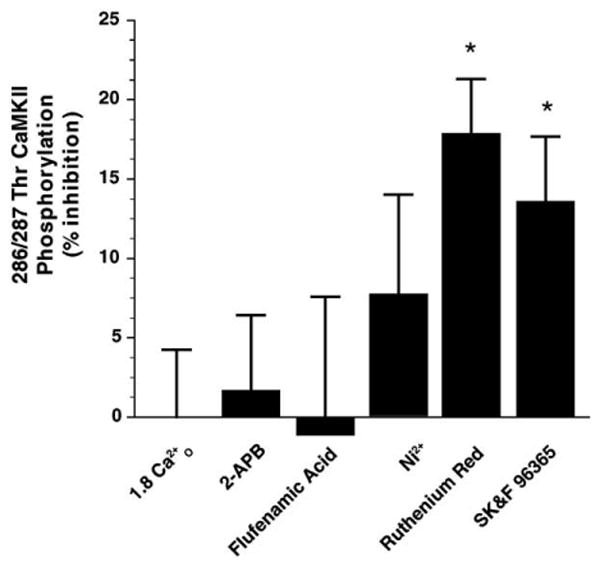Fig. 6.

CaMKII activation by Ca2+O is sensitive to inhibitors of SOCs. DRG neurons were incubated in SOC blockers prior to stimulation by 1.8 Ca2+O. Phosphorylation of CaMKII in 0 Ca2+O was 11 ± 2% of maximal activation. Ruthenium Red (RR) at 100 μM and SK&F 96365 at 10 μM modestly inhibited the activation of CaMKII by 19 ± 4% (n = 16) and 14 ± 4%, respectively (n = 16). 2-APB (n = 12) and flufenamic acid (n = 9) at 100 μM did not block CaMKII activation. Because EGTA effectively chelates Ni2+, EGTA was excluded from the buffer. Following incubation in 0 Ca2+ for 1 h in the absence of blockers, DRG neurons were then stimulated with 1.8 mM Ca2+O in the presence of Ni2+ (500 μM). Basal CaMKII phosphorylation in this nominally Ca2+-free saline was 31 ± 3% of maximal phosphorylation by 1.8 Ca2+O (n = 6) which is higher than in experiments performed in the presence of EGTA to buffer [Ca2+]O to low nM levels. Both RR and SK&F 96365 significantly decreased CaMKII activation (one-way ANOVA testing the effect of SOC blockers on Ca2+O stimulation: F5,86 = 2.64, p = 0.029).
